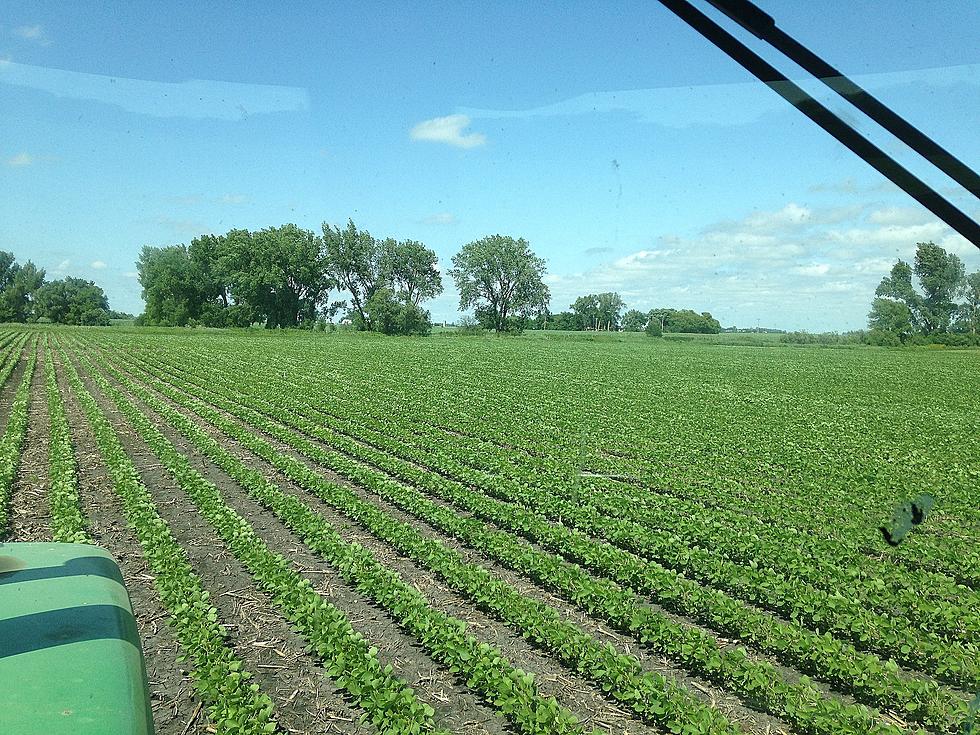
Soybean Seedling Diseases
David Key is the director of research at Minnesota Soybean and he wrote a very timely article on soybean seedling diseases. It was published in the Minnesota Soybean Growers weekly newsletter Minneline. The most effective management practice to control seedling diseases is to plant into a "well drained, non-compacted soil with soil temperatures at 55 degrees or higher." Given the weather this spring and the forecast we may not get warm dry soils until June!
So, farmers will be planting soybeans in less than ideal conditions. How do we manage soybean seedling diseases? David pointed out that there are four common Minnesota soybean seedling diseases: Pythium, Phytophthora, Fusarium, and Rhizoctonia. Fusarium and Rhizoctonia are true fungus, the other two are fungal likes. This is important because there is not a seed treatment that controls all four diseases.
One soybean seed treatment will control the two fungal diseases but will not control the fungal like diseases. However, there are other seed treatments that will control the fungal like diseases. That is why you need to identify which seedling disease you have in each individual field. This is where good production records from previous years is important. If you identified one of the seedling diseases in a field that will make selecting the proper seed treatment easier!
David said he knows profit margins are tight this year and the last thing a soybean farmer needs is more expenses. However, this is likely the year where the right seed treatment will likely pay for itself and a lot more. Be sure to read David's article in the Minneline and talk with your agronomist about possibly using a seed treatment this spring.
More From KDHL Radio
![[Listen] Gordy Recap Bean Acres Down 4 Million Corn Up 2 Million](http://townsquare.media/site/685/files/2021/06/BEANS-BEFORE-SPRAYING-6-26-17.jpg?w=980&q=75)
![[Listen] Gordy AG Market Recap Grans Sharply Lower Late Week](http://townsquare.media/site/685/files/2023/06/CHAD-SIDE-DRESSING-NITROGEN.jpg?w=980&q=75)
![[Listen] Gordy Recap Markets Closed Today](http://townsquare.media/site/685/files/2021/12/Soybeans-Growing91.jpg?w=980&q=75)
![[Listen] Jeff Vetch SROC How Much Nitrogen Did We Loose?](http://townsquare.media/site/685/files/2022/01/CHAD-SIDE-DRESSING-NITROGEN.jpg?w=980&q=75)
![[Listen] Gordy Market Recap Bears Have Everything Going Their Way](http://townsquare.media/site/685/files/2021/04/4430-PLANTING-SWEET-CORN-AT-NIGHT.jpg?w=980&q=75)

![[Listen] Gordy Ag Market Recap Brutal Week We Have Seen Before](http://townsquare.media/site/685/files/2022/06/CHADS-COMBINE1.jpg?w=980&q=75)
![[Listen] Gordy Ag Market Recap Fed Comments Spook Markets](http://townsquare.media/site/685/files/2022/06/CHADS-COMBINE1.jpg?w=980&q=75)
![[Listen] Gordy Ag Market Recap Pretty Good Action Friday](http://townsquare.media/site/685/files/2022/06/CHADS-COMBINE1.jpg?w=980&q=75)
